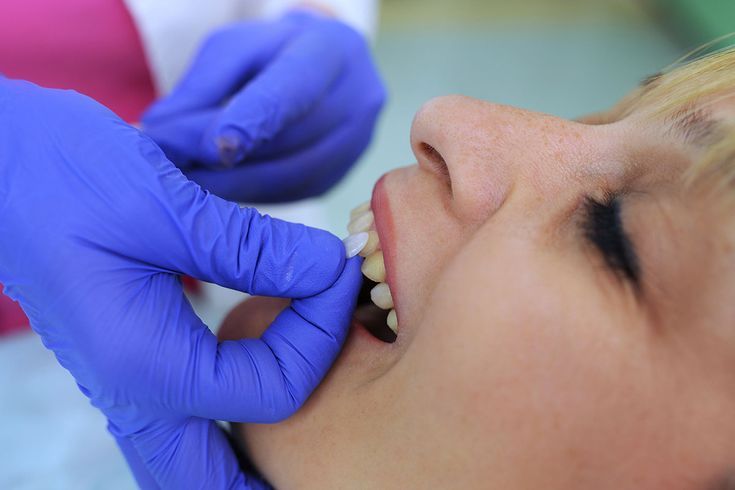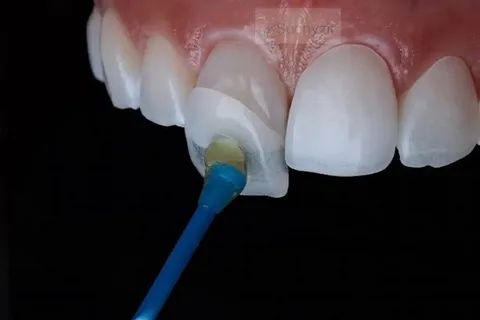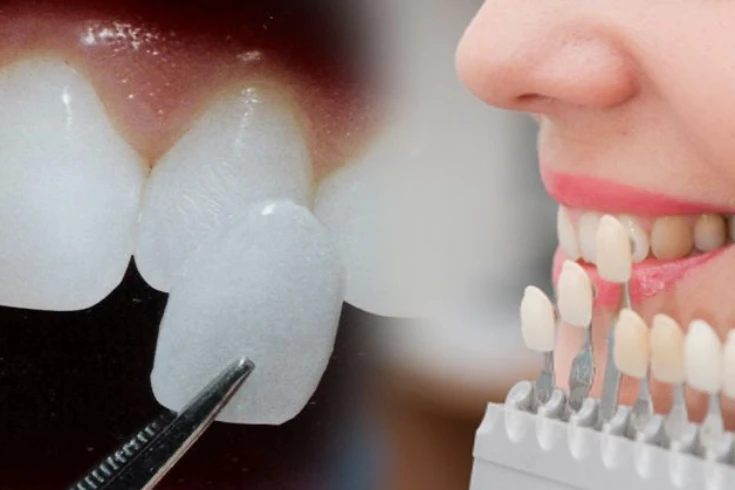Dental treatments have been revolutionized over the years. One of the many options for restoration includes composite strip crowns. In pediatric dentistry, such options are especially popular because, aesthetically, they restore the natural look of the tooth while keeping its structure intact. In this blog, we explain what composite strip crowns are, their advantages, application process, and considerations while opting for this treatment.
What are composite strip crowns?
Composite resin strip crowns are a type of dental restoration used primarily for restoring primary teeth that have been decayed or destroyed. Composite strip crowns consist of a thin, clear plastic shell that is filled with tooth-colored composite resin. The plastic shell serves almost like a mold to help form the resin as it takes shape of the tooth. After hardening, the shell is removed to reveal a natural-appearing crown. It is widely used in pediatric dentistry for restoring the incisors but can be adapted for other teeth also.
Advantages of Composite Strip Crowns
The advantages of composite strip crowns are as follows:
- Cosmetic Effect: Composite strip crowns simulate the tooth’s anatomy much more than metal crowns, thus giving a more esthetic response than traditional metal crowns. These materials are tooth-colored and blend into the rest of the teeth. Thus ensuring that the child will not look fake.
- Minimally Invasive: Unlike some other dental treatments, composite strip crowns aren’t invasive at all. The main procedure requires only minimalistic removal of the tooth structure and thus is apt for children with dental phobias.
- Restoration of Functionality: These crowns help restore not only the appearance of damaged teeth but also aid in preserving the functionality of the teeth. They offer structural support and allow kids to properly masticate food.
- Cost-Effective: The cost of the composite strip crown is relatively lower compared to other Zirconia crown and stainless steel crown. Because of this, composite strip crowns are also preferred by the parents since they present a very efficient yet cost-effective treatment option.
- Biocompatibility: The materials used in composites are biocompatible. That means that they do not cause any adverse reactions if used intraorally.
How is a Composite Strip Crown Applied?
Generally, there are steps a dentist goes through in the application of composite strip crowns. The steps are as follows:
Initial Consultation and Examination
The dentist will first inspect the child’s teeth to determine the extent of the decay or damage. The dentist may take X-rays to examine the state of the tooth. They will also confirm whether a composite strip crown is indeed the best treatment.
Tooth preparation
Extraction of decays and contaminated tissues: The tooth that would receive the crown will be cleaned by the dentist and every form of decay or very damaged tissue needs to be taken out. Normally some part of the structure of the tooth has to be taken out just to ensure the crown is fit properly.
Selection of Composite Strip Crown
The best fitting size of the crown to the shape and size of the tooth is selected by the dentist. The dentist will fill the inside of the crown with composite material resin.
Placement and Shaping
The dentist will place a crown over the prepared tooth to contour to the adjacent teeth. The resin is then cured with a special light.
Strip Crown Shell Removal
Once the composite resin has hardened, the shell is carefully removed, leaving the hardened composite in place as the new crown.
Polishing and Finishing Touches
The final step is smoothening of the composite to a smooth surface and natural appearance. The dentist will also make necessary adjustment of the bite at this stage.
Indications for Composite Strip Crowns
Indications for composite strip crowns include:
- Restoring badly decayed primary teeth.
- Repairing fractured or chipped teeth in children.
- Protective indication for teeth with developmental defects that weaken their structure.
- Alternative to other restorative options such as stainless steel crowns.
Limitations of Composite Strip Crowns
Composite strip crowns are an excellent option for most indications; there are, however, some peculiarities one should be aware of:
- Durability: Composite restorative materials are also much weaker than metal or porcelain and have a tendency to wear over time. They tend to be used only for temporary restorations in the primary teeth due to a probable shorter duration than those materials in permanent crowns.
- Maintenance: Composite strip crown may be a little more sensitive with staining and chipping, but for oral hygiene practices, the dentist must be followed.
- Suitability for Adults: They are, therefore, always better for children since the teeth of a grown-up could require more robust restoration. In the case of adult teeth, there are usually other recommendations like ceramic or metal crowns.
How to Care for Composite Strip Crowns
In such cases, if the parents want their children to have composite strip crowns for a longer period of time, here are some oral care tips that they can have. These are:
- Practice Good Oral Hygiene: Normal brushing and flossing once a day will prevent the formation of plaque and decay around the crown.
- Consume less sugar: Intake of too much sugary substances and drinks will lead to decaying, which is undesirable. Hence, one should always be on an accurate diet and minimize the intake of sugary snacks.
- Regular Check-up: Routine dental visits enable monitoring of the crown’s condition and the overall status of the teeth.
- Avoid Hard or Sticky Food: The hard or sticky foods may break off the crown. The hard or sticky food might also dislodge the location of the tooth.
Conclusion
Composite strip crowns are a practical and pleasing option for the restoration of badly decayed or broken primary teeth. They are suitable restorations for children due to their natural appearance, biocompatibility, and inexpensiveness. Although a few disadvantages exist, their advantages tend to be greater, especially in pediatric dental procedures. Consult with a dentist if your child may have a need for a tooth restoration and discuss whether composite strip crowns are a suitable option. Early steps will help to retain oral health and give a child an opportunity to smile with confidence.
FAQ’s
How long do composite strip crowns last?
Composite strip crowns will not be as durable as metal or porcelain crowns and may wear down over time. The dentist uses it generally on a primary tooth to exfoliate. If properly cared for composite strip crowns will last the longevity of the primary tooth.
Can composite strip crowns stain or chip?
Yes, composite strip crowns tend to stain and chip more compared to other crowns. These risks can be minimized by good oral hygiene and not chewing hard or sticky food.
Are composite strip crowns cost-effective?
Yes, they are cost-effective as opposed to the restorative options. Their affordability with the added benefits makes them popular for the restoration of primary teeth in children.
How do composite strip crowns compare with stainless steel crowns?
Although not as durable as their stainless steel counterpart, composite strip crowns have an aesthetic appeal since they are tooth-colored. Which one would, therefore, be used will depend upon the position of the tooth and specific needs of the case.





